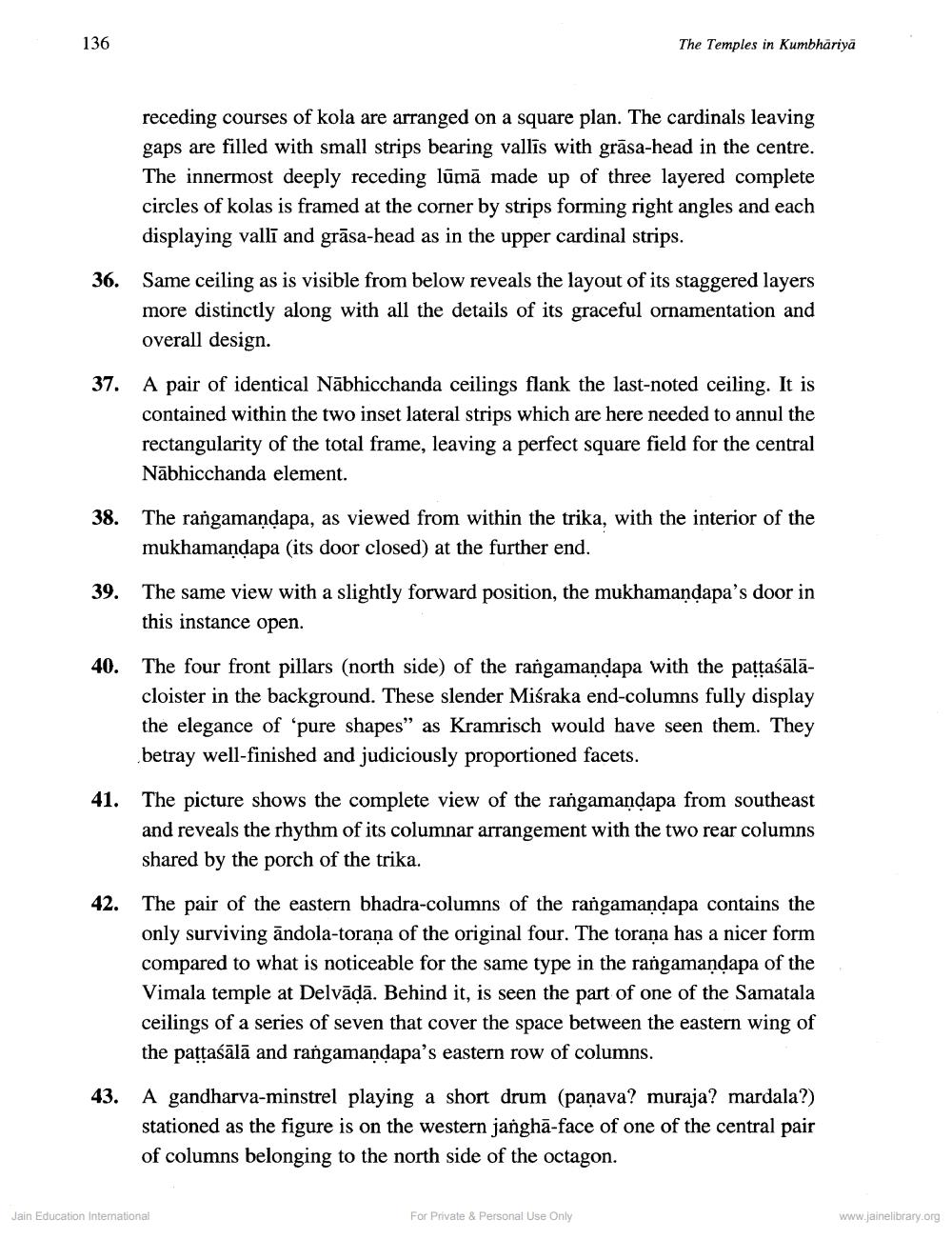________________
136
36. Same ceiling as is visible from below reveals the layout of its staggered layers more distinctly along with all the details of its graceful ornamentation and overall design.
38.
37.
A pair of identical Nãbhicchanda ceilings flank the last-noted ceiling. It is contained within the two inset lateral strips which are here needed to annul the rectangularity of the total frame, leaving a perfect square field for the central Näbhicchanda element.
40.
receding courses of kola are arranged on a square plan. The cardinals leaving gaps are filled with small strips bearing vallis with grasa-head in the centre. The innermost deeply receding lumā made up of three layered complete circles of kolas is framed at the corner by strips forming right angles and each displaying valli and grasa-head as in the upper cardinal strips.
The Temples in Kumbhariyā
39. The same view with a slightly forward position, the mukhamandapa's door in this instance open.
42.
43.
The rangamandapa, as viewed from within the trika, with the interior of the mukhamandapa (its door closed) at the further end.
41. The picture shows the complete view of the rangamaṇḍapa from southeast and reveals the rhythm of its columnar arrangement with the two rear columns shared by the porch of the trika.
The four front pillars (north side) of the rangamandapa with the paṭṭaśālācloister in the background. These slender Miśraka end-columns fully display the elegance of 'pure shapes" as Kramrisch would have seen them. They betray well-finished and judiciously proportioned facets.
The pair of the eastern bhadra-columns of the rañgamandapa contains the only surviving ändola-torana of the original four. The torana has a nicer form compared to what is noticeable for the same type in the rangamandapa of the Vimala temple at Delväḍā. Behind it, is seen the part of one of the Samatala ceilings of a series of seven that cover the space between the eastern wing of the paṭṭaśālā and rangamandapa's eastern row of columns.
A gandharva-minstrel playing a short drum (paṇava? muraja? mardala?) stationed as the figure is on the western jangha-face of one of the central pair of columns belonging to the north side of the octagon.
Jain Education International
For Private & Personal Use Only
www.jainelibrary.org




